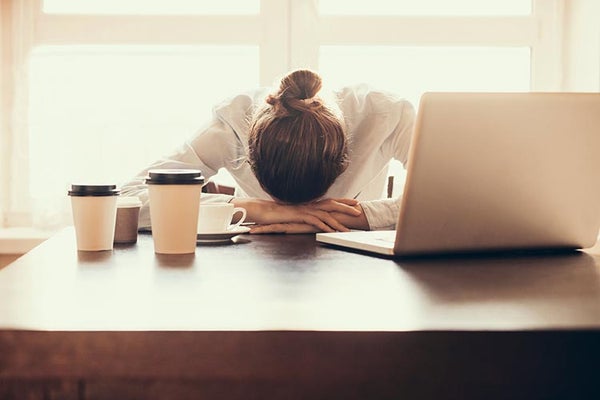We would all appreciate a healthy work-life balance, but even those of us who try to unwind outside the office are frustrated by the gentle chime of email at all hours. To our delight and horror, smartphones and tablets have given us the flexibility to respond to work from anywhere, practically becoming one of the family. Entrepreneurs and executives are known for a round-the-clock devotion to work, in contrast to the four-day-week gurus, but what toll does availability take for those whose jobs require it?
A recent study links extended work availability with decreased calmness, mood, and energy levels. By looking at industries from technical services to nursing, the study evaluated the effects of being on-call — that is, not at work, but being expected to remain available by phone for questions or customer requests. Participants answered questions in the evening after an on-call day about how often they thought about work or how constrained their activities felt. The next morning, they were quizzed again to better understand how the previous day’s mental requirements affected their mood.
Participants marked lower moods the morning after being on-call compared to mornings after days when they were not required to be available, which the researchers believe occurs because readiness to respond makes it harder to recover from work. The possibility alone impeded recovery from work, as the effects persisted even when no calls came.
On supporting science journalism
If you're enjoying this article, consider supporting our award-winning journalism by subscribing. By purchasing a subscription you are helping to ensure the future of impactful stories about the discoveries and ideas shaping our world today.
These results were strengthened by an association between psychology and physiology. Cortisol is a stress hormone, and changes in cortisol levels are associated with health problems. While hunter-gatherers probably found these changes useful in preparing for predator attacks, today’s consensus is that the unavoidable daily stressors of modern life change cortisol levels in ways more harmful than helpful.
Normally, a person’s cortisol level rises each morning and falls over the course of the day, but stressed people tend to have different cortisol profiles. The baseline levels of cortisol in the chronically stressed remain higher overall, and the natural morning peak is quicker to rise. (“Burnout,” heralded by fatigue and exhaustion, occurs when a stressed person’s baseline cortisol falls from the elevated levels right past the norm to unusually low levels, and the morning peak in the hormone is slower or absent.) In this study, an individual’s morning levels of cortisol increased more quickly when participants would be on call, resembling the higher hormone levels seen in job stress. This may simply be the body’s way of preparing for the anticipated stresses ahead, the authors suggest.
Some secrets to avoiding the damages of daily stress lie in the variation between people. In this study, there was wide variation in the effects on the participants. Some people experienced none at all. What accounts for this? That question has led to research in recent years on the flip side of stress, resilience. The body’s response to stress is so complicated that looking at the people who cope well with stress may give more straightforward coping strategies than working from molecular scratch.
Specifically, this on-call study found the measurement that best accounted for a person’s resilience was detachment. Detachment sounds like a stiff drink poured over some disdain, but the psychological detachment in this case constituted positive answers to questions like “This evening I didn’t think about work at all.” People who were able to detach from work even while on call were most likely to recoup their energies and avoid effects on mood and cortisol. In lieu of actually reducing work availability, practicing mental detachment from work might be the next best approach.
Today, employees (and employers) feel pressured into responding immediately to communications after hours. Email notifications and phone calls chime us through each weekend and get us searching for vacation spots boasting minimal service or banning cell phones altogether. “Nonwork hours during which employees are expected to respond to work issues constrain employee behavior,” say the authors of the current study, “and cannot be considered leisure time.” Given the present knowledge of stress’s long-term effects on our health, we have two options to consider. We can reduce job stress or maximize recovery afterwards. But so long as we are jumping to answer the phone when work calls, there is little chance of either happening. As eminent stress researcher Robert Sapolsky noted in a 2012 talk at UC Berkeley, not all stress is harmful, but duration is key. “Good stress is transient—it’s not for nothing that you don’t have roller coaster rides going for three weeks.” Work can feel like the never-ending roller coaster ride, and our breaks only gives us respite when we quite literally switch off.

